Paolo Portoghesi: The Field Theory

Architects mediate the complexity of the world and their ideas through different instrumental modalities. Whether perspective drawings, proportional relationships, descriptive geometry, material prototypes, scaled models, maquettes or three-dimensional models – models serve the purpose of collecting and indexing information into measurable and rational systems so that the architectural project can be nurtured, refined, measured, and its behaviour simulated, tested and possibly predicted before getting built.
The model works, at the same time, as an instrument of measurement, representation and forecast. It measures the extensive characteristics of matter, it represents the built form via other media, and it predicts its intensive traits, its behaviour. The model operates in the Deleuzian domain of the virtual: it is ‘non-actual, nonetheless it’s real’. [1]
The history of architecture unfolds vis-à-vis the history of machinic civilisation. It can be argued that the evolution of machines intertwines the evolution of rational thinking which, in turn, has contributed to the development of architecture.
In his book Curious Technique, Paolo Portoghesi reflects on ‘the machine designed mentally before being built, even the machine only conceived and investigated abstractly as an idea’. In essence, overcoming the cognitive and cultural boundaries of paleo-technological societies, machines have ranged from tools as a simple extension of the body (such as a hoe or a spade), to something that ‘begins to impose itself as a direct projection of reasoning or as a fantastic stimulus linked to the mysterious sense of nature, to the desire to discover and celebrate the secrets of movement, strength and time together’. [2]
Machines have, in time, embodied many of our deepest fears and our brightest expectations: from early functional objects at the service of mankind to the inexhaustible force of transformation and change, all the way to acquiring the physiognomy of a living being capable of reproducing itself and endowed, if not with its will, with a surprising power to impose its rhythms and rules on humanity.
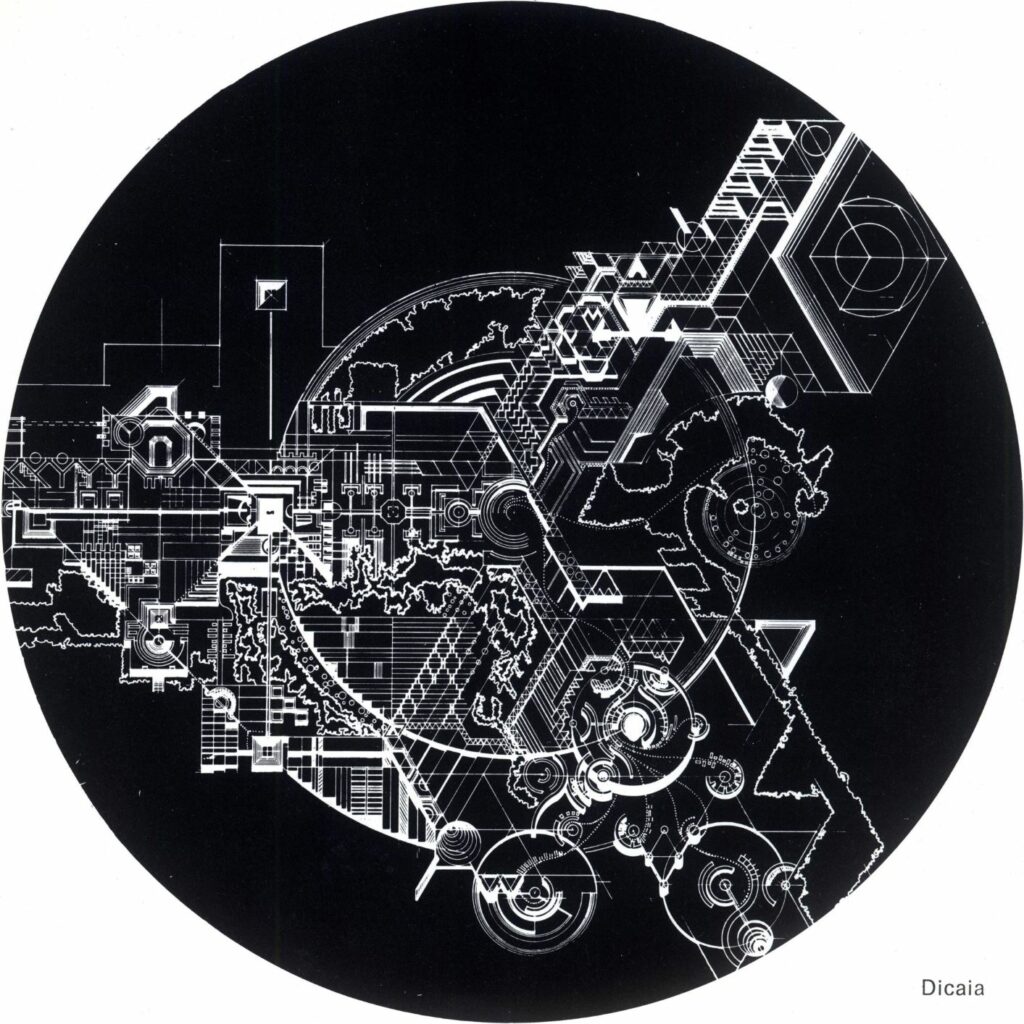
Following Turing’s theory and artificial intelligence, Portoghesi discussed these issues with philosopher Vittorio Somenzi. They perceived by intuition that the machine can reproduce itself and is, therefore, able to collect the message of one generation and transmit it to the next one. The utopian project for the city of Dikaia, developed by Portoghesi in 1969, was born precisely from these reflections: an entirely mechanical city capable of reproducing itself and based on the systematic transmission of information, generation after generation.
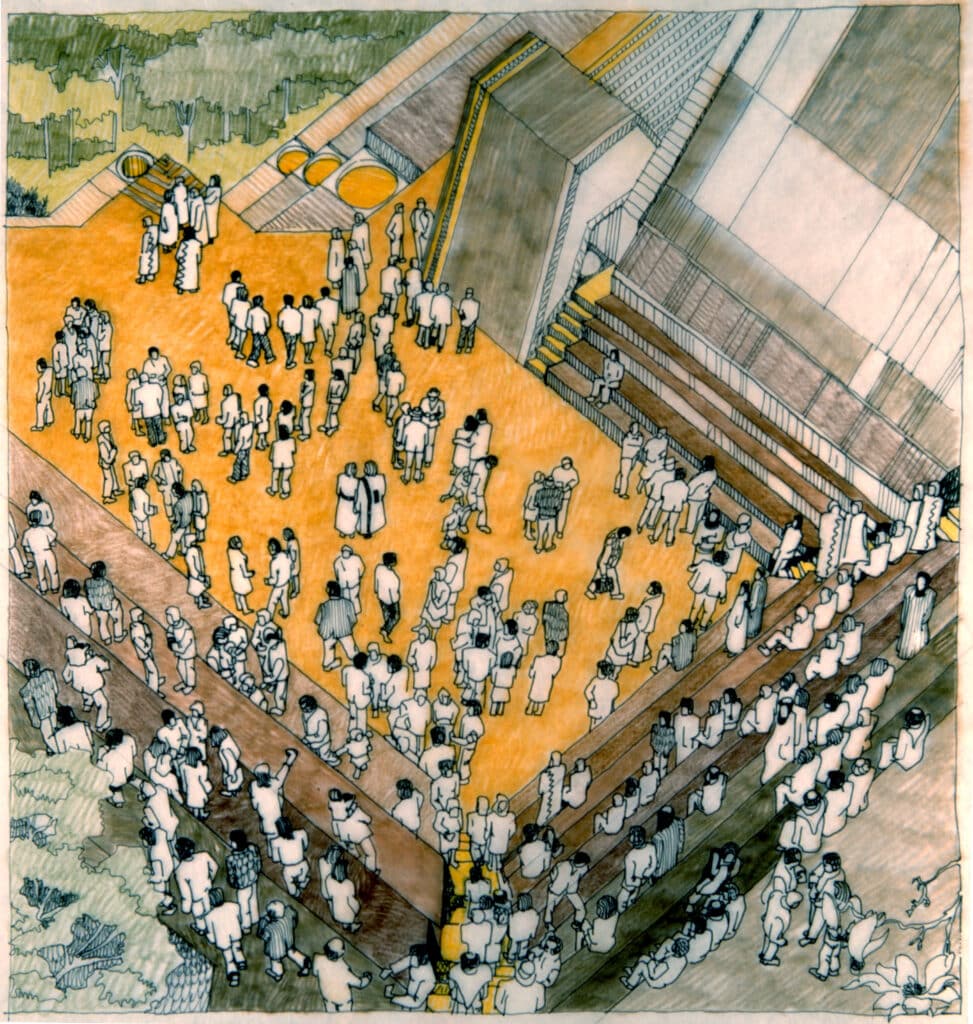
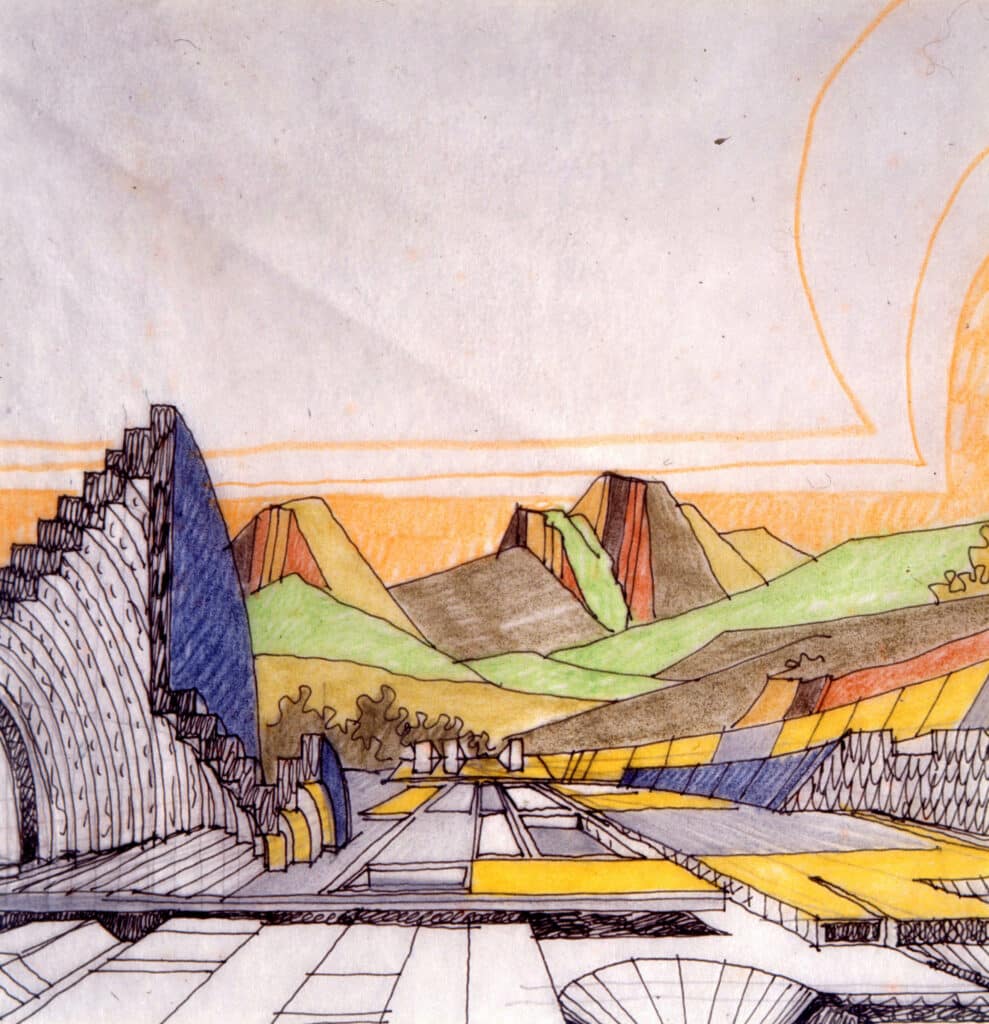
This fascination for machines ran parallel with Portoghesi’s obsession with the figure of Francesco Borromini. Born in Rome in via Monterone, a stone’s throw from Piazza Sant’Eustacchio, Portoghesi observed the dome of Sant’Ivo on his daily commute to school. That ‘strange’ building would haunt him for the rest of his life. Sant’Ivo alla Sapienza, built by Borromini between 1642 and 1660, together with the Oratorio dei Filippini which is located nearby the house of his grandparents in Piazza della Chiesa Nuova, exerted a charm that marked his entire career as an architect and an intellectual.
Borromini became part of Paolo Portoghesi’s imagination from a very young age. His architecture became a ‘problem’ to which Portoghesi dedicated study and insight for the rest of his life. At 16 he wrote his first booklet dedicated to the Baroque master: hand-typed, printed in very few copies and distributed to his closest friends. It was the first act of love for a figure to whom Portoghesi dedicated numerous books, becoming one of the greatest scholars and historians of the Baroque.
Proto-parametric Baroque
In the seventeenth century, the progress in modern mathematics opened up new possibilities and freed architecture from its hefty Vitruvian tradition. It is within this context that early forms of proto-parametric processes emerged. Parametric design can be defined as a system to organise the relationship between the constituent parts of a building and its entirety by means of dependent variables. These relationships can be either explicit – they depend on an explicit constraint – or implicit, that is a variable dependent on another variable.
Some sort of proto-parametric systems governing the alteration of geometry by means of proportional dimensions can be dated back to antiquity. The Golden Section, for instance, can be described as a case in point. As Mario Carpo points out, these forms of notations emerged out of necessity due to the lack of an accurate system of reproduction of graphic drawings rather than from a cultural necessity. [3]
Since Vitruvius, architectural orders were described as a modular subdivision of an initial quantity. The diameter of a column, for instance, could be taken and recursively subdivided to proportionally scale all its component parts. This dimensional system allowed the dimensioning of the column so that it complies with the requirements of the classical order.
At the turn of the seventeenth century, Baroque architecture represents one of the most sophisticated examples of proto-parametric architectural styles. At its core lies a novel understanding of architectural form as a variation of a set of malleable geometrical parameters. Bernini and Borromini understood the relation with the classic Vitruvian tradition as a model to be used to develop a new formal vocabulary rather than a style to adhere to and replicate. For them, true freedom lay within the canon, which should be mastered and manipulated through its intrinsic parametric logic. They exploited the possibilities offered by the very instruments they had at their disposal for the development of geometrical composition, such as cords and rulers. These manipulations were of fundamental importance as they allowed for a series of proto-parametric transformation of geometry. [4]
In San Carlino alle Quattro Fontane, for instance, Borromini employed recursive geometric subdivisions to achieve surface continuity. He used the pantograph (which possesses the quality of the cord and the ruler) to generate flowing curves with varying tangents. He achieved that by recursively tracing curves along the path of another curve. Moreover, both in plan and in the elevation of the facade, the church was developed by using the diameter of the columns to create a complex interplay of concave and convex geometries.
Whereas classical architecture follows the aggregation logic of simple square or rectangular prismatic forms, Borromini subverted this principle by means of a recursive subdivision of convex and concave geometries rendering the plan of the building as well as the entire composition, a dynamic elegant whole. Borromini, however, did not enjoy the favour of his contemporaries. He was considered extravagant and a profane interpreter of the classic canon.
Computation without computers
In 1970, Paolo Portoghesi published Roma Barocca and, throughout his academic and professional career, he entertained a virtual intellectual ‘dialogue’ with Francesco Borromini. [5] This passion surfaced, in different forms, time and time again throughout his built and written works. Machines, the Baroque and applied mathematics outline a very different profile to Portoghesi’s official biography.
The architectural climate around the second half of the twentieth century was one where, with the advance of computer science, a renewed interest for the algorithmic and the procedural approach to architectural design was blossoming. Architects of late-Modernism started to develop new procedural design methodologies, whether through the direct use of computers or through the development of analogically and yet systematic ways of working. Paolo Portoghesi, most famously known for being the first curator of the Venice Architecture Biennale in 1982 and subsequently one of the main interpreters of the Postmodern, represents an interesting and unexpected case in point.

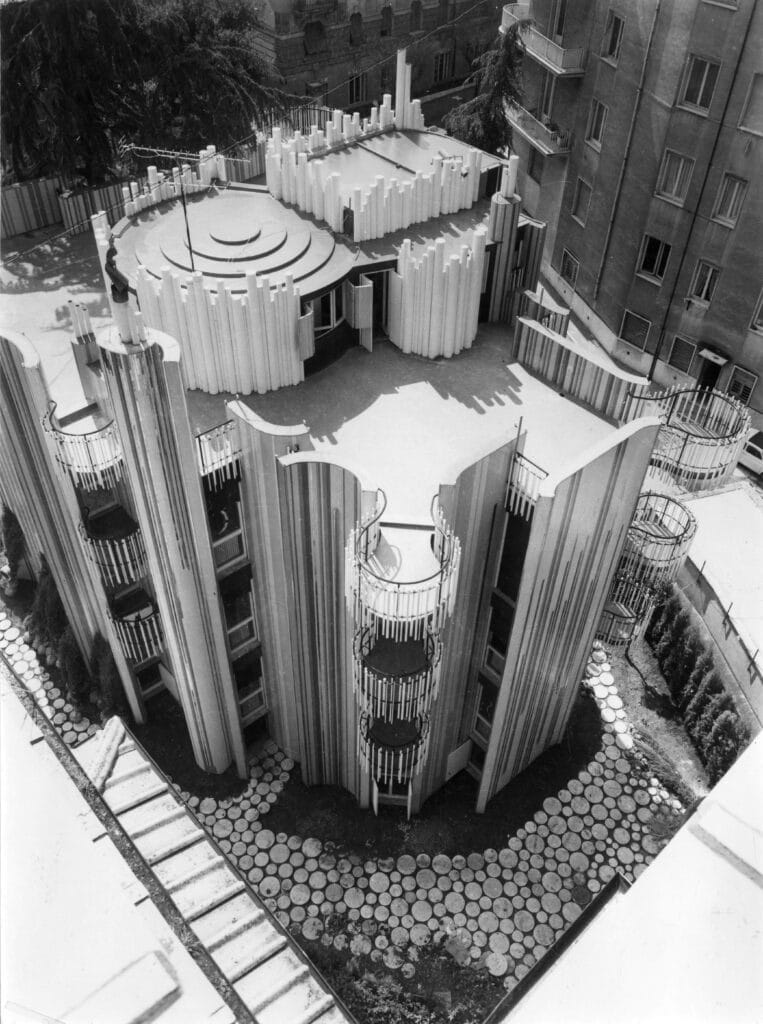
Between the 1960s and 1970s, Portoghesi engaged in a series of projects in which he explored, as an architect, some of the themes developed through his friendship with Bruno Zevi who, at the time, was trying to contrast the orthodoxy of the modern movement through a critical rapprochement to history. Quoting Sullivan, Zevi sought to find ‘the new in the old and the old in the new’. [6] This approach seduced Portoghesi, so they both started working on Michelangelo architetto, a book that never saw the light of the day due to a clash between the egos of the two authors.
Nonetheless, on the back of this experience, in 1974 Portoghesi published Inibizioni dell’architettura moderna (The inhibition of modern architecture), where he attempts to develop a comprehensive theory of space. [7] Starting from a series of stories and personal memories of his youth in Rome, the author expresses the fascination for the ‘Eternal City’ and, of course, its Baroque heritage. In the book, Portoghesi tried once again to go beyond the orthodoxy of the Modern that operated a dogmatic caesura between the historic city and modernity. On the contrary, he tried to mend the historic heritage and modern experience. Portoghesi prayed for a re-appropriation of history without fear or inhibitions, integrating the memory of the past with the desires and needs of modernity.
Portoghesi, helped by his friend Norberg-Schulz, set out to discover ‘Rome before Rome’, a formal matrix for the urban development of the city of Rome. He found it along the Treja valley, in northern Lazio, where the beloved fortified historic centre of Calcata is located. Portoghesi interpreted le forre, a system of gorges and inlets that cut the morphology of the territory thanks to the action of the waterways, as a matrix of the spatiality of Rome, also made up of insulae and narrow streets. Inhibitions is however significant for the ‘Teoria dei Campi’ (the Field Theory). From the observations of the ornaments of the altars in Baroque churches, Portoghesi reflected on architectural elements that can ‘emanate’ waves, as if they were magnetic fields, which affect the surrounding spaces of the church. This intuition needs new models and representative tools.


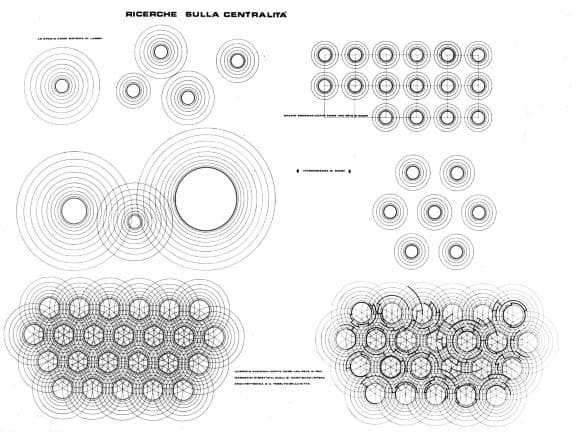
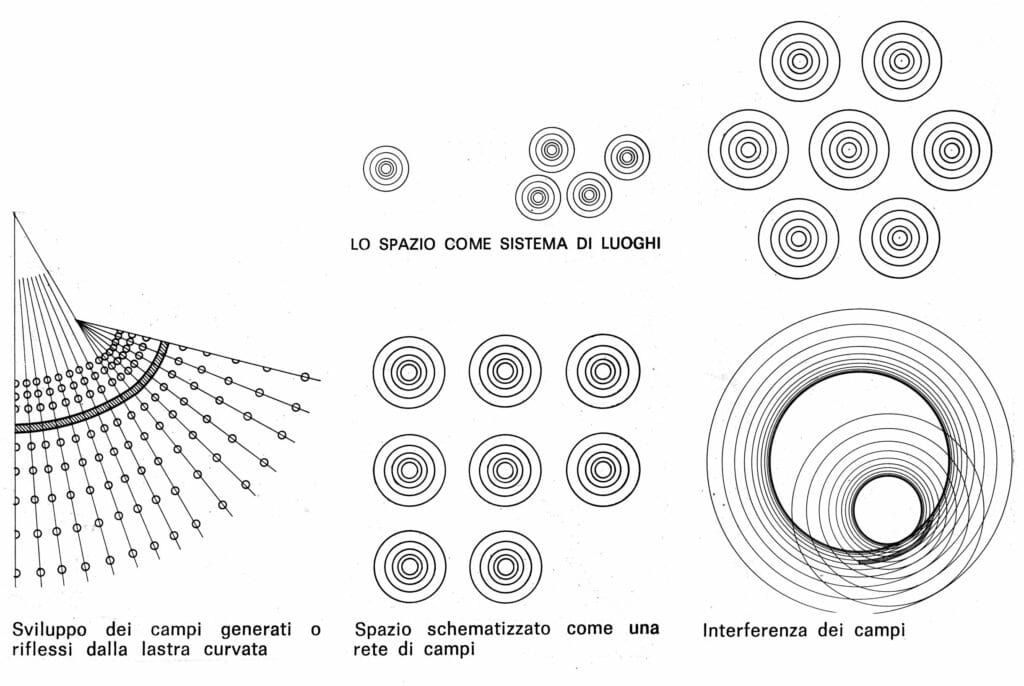
This research produced a series of diagrams in which a series of rippled waves emanate in concentric circles. Even before being architectural plans, these drawings are spatial diagrams that produce a field of lines of varying intensity. This field becomes the model in which walls, structures and dividing elements can be arranged and, at the same time, less tangible qualities of space can be expressed, such as light and sound. In this case, the diagram can be understood as a way of reading the intensive qualities of space: each centre can be understood as a point of particular intensity – due to its program or due to its specific quality of light or sound. Although not developed with computers, this design methodology follows strictly algorithmic logic. The field, in addition to exploring the potential for a more open and porous spatiality, becomes a model for the articulation of a new formal expression.
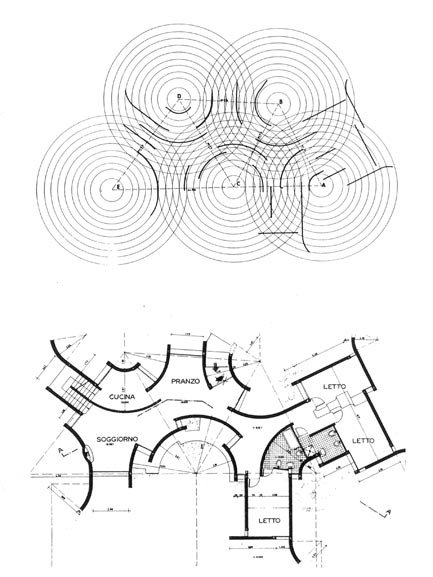
This theory was applied for the first time in the project for Casa Andreis (1964–1969). The layout of the walls and the division of the space of the house follow the model built through the circles. The result is a structure that supports free movement and establishes a very fluid interaction between solid and void and between inside and outside.
Once again, the influence of Borromini is reflected in Portoghesi’s architecture. Here, as in the drawings for San Carlino, the regulatory layout, the system that demonstrates the scientific nature of the architectural composition is used as the generative matrix of the project. Borromini was one of the few artists, between the sixteenth and seventeenth centuries, who used graphite (most of his contemporaries drew with the pen), managing to express his ability to draw ‘mathematically’ achieving absolute precision and accuracy. In his works, Borromini was determined to fully rationalise the process: he was not satisfied with the direct control over the project, by means of instructing the builders or adjusting the design in constructione. Instead, he was willing to use systems of indirect control that can guarantee extreme accuracy, both during the design phase as well as during the on-site setting out.
In the same way, Portoghesi established a virtual matrix (the field) as a tool of soft control over the project. He discussed and applied the concepts of field, growth, rhythm and process, which were conceived as indirect control systems.
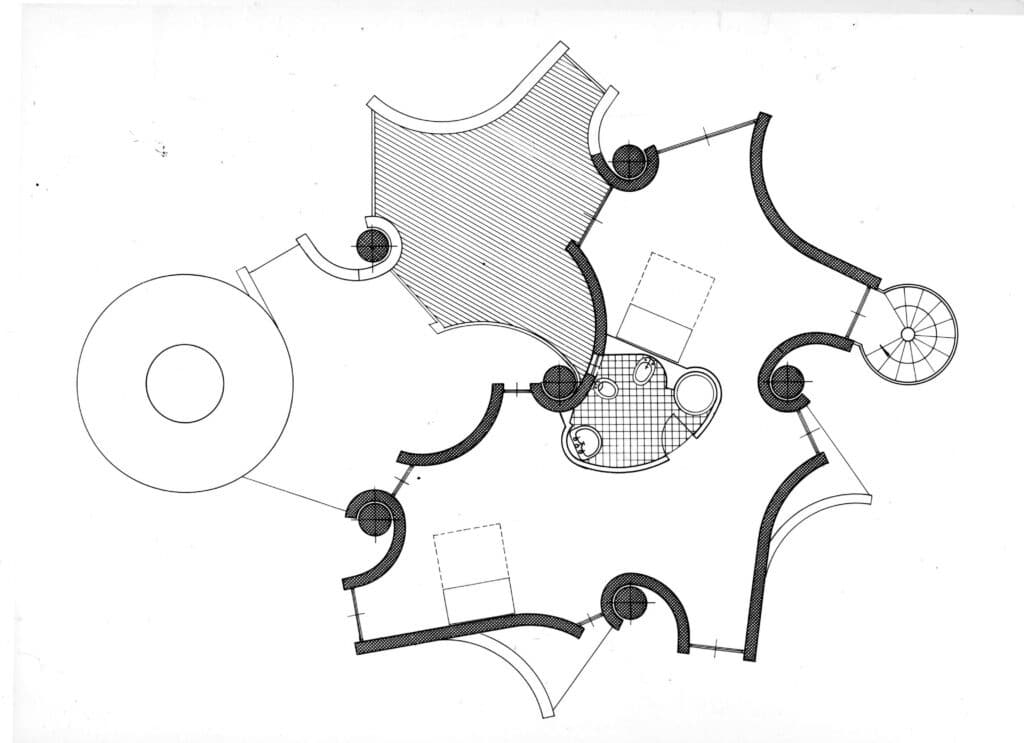
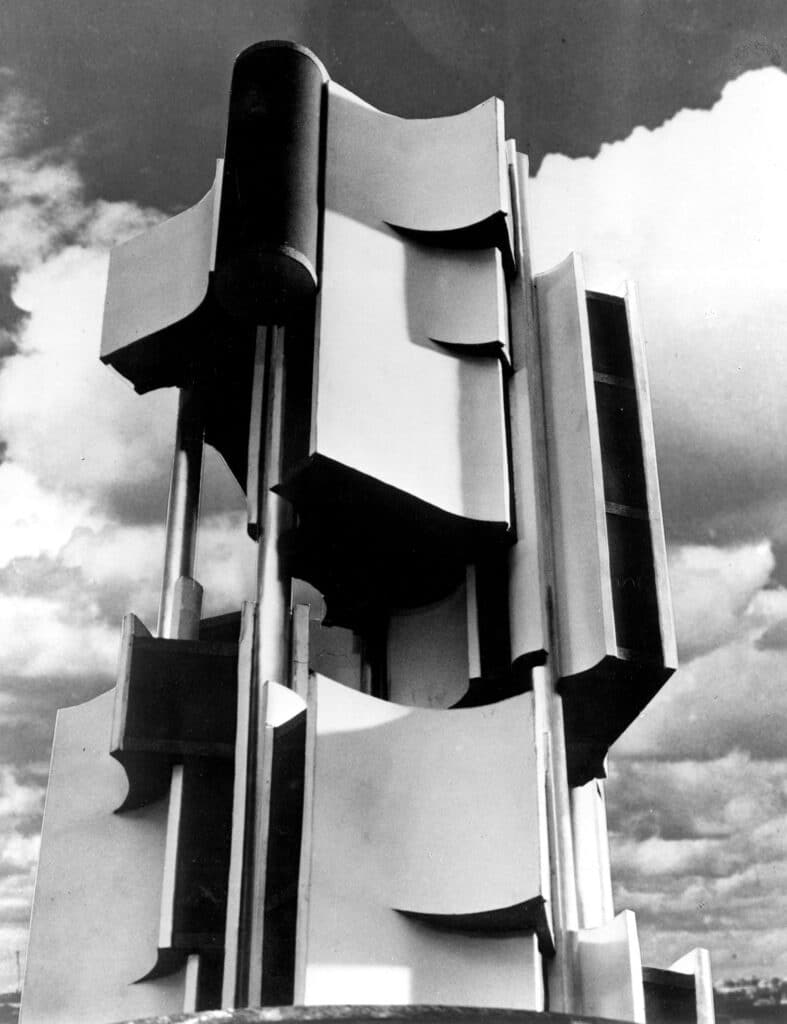
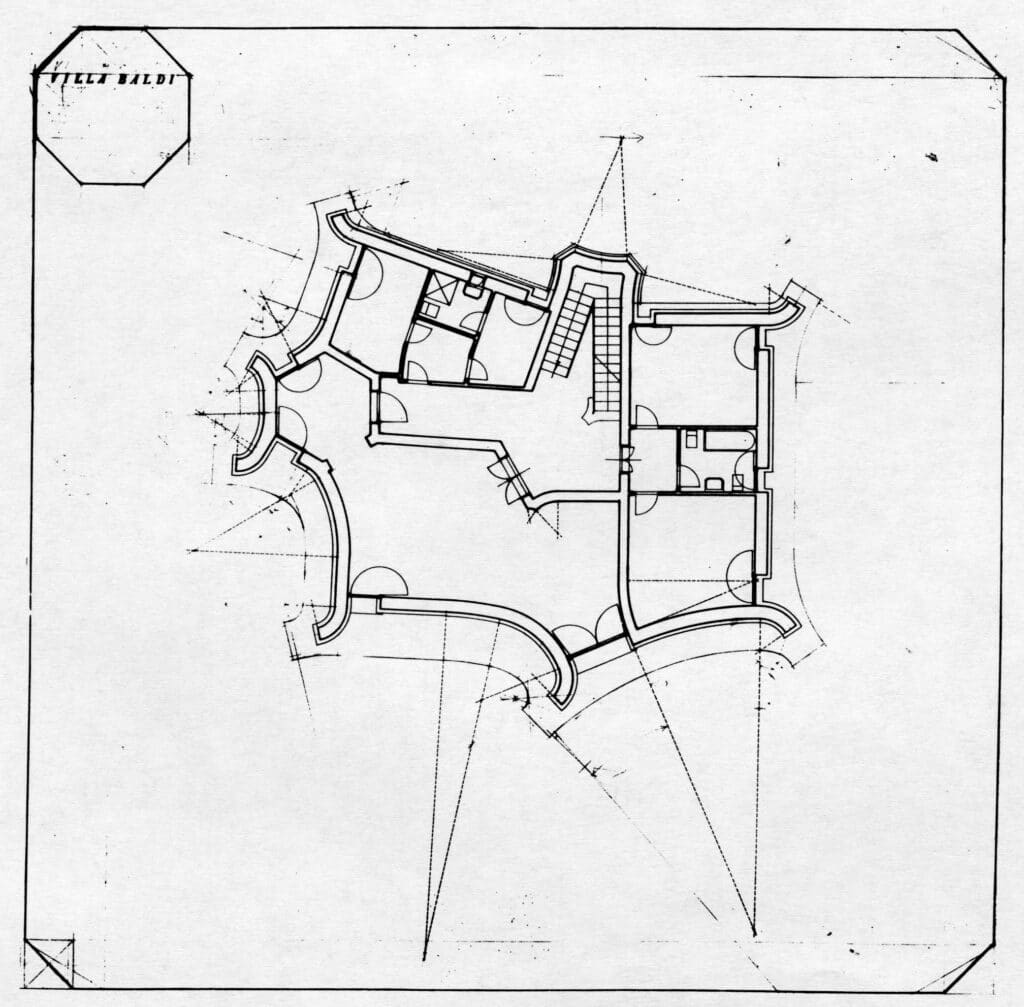
Since his first projects for a villa for the Baldi family on the outskirts of Rome, Portoghesi has experimented with a proto-algorithmic design methodology using generative diagrams as an organizational principle. The result is an open structure that produces a heterogeneous space in which the parameters that affect space (walls, air, light, etc.) define the shape of the building.
The project for the church of the Holy Family in Salerno is undoubtedly the most mature and successful example of this corpus of works as the exploration of the fields fully extends into the third dimension.
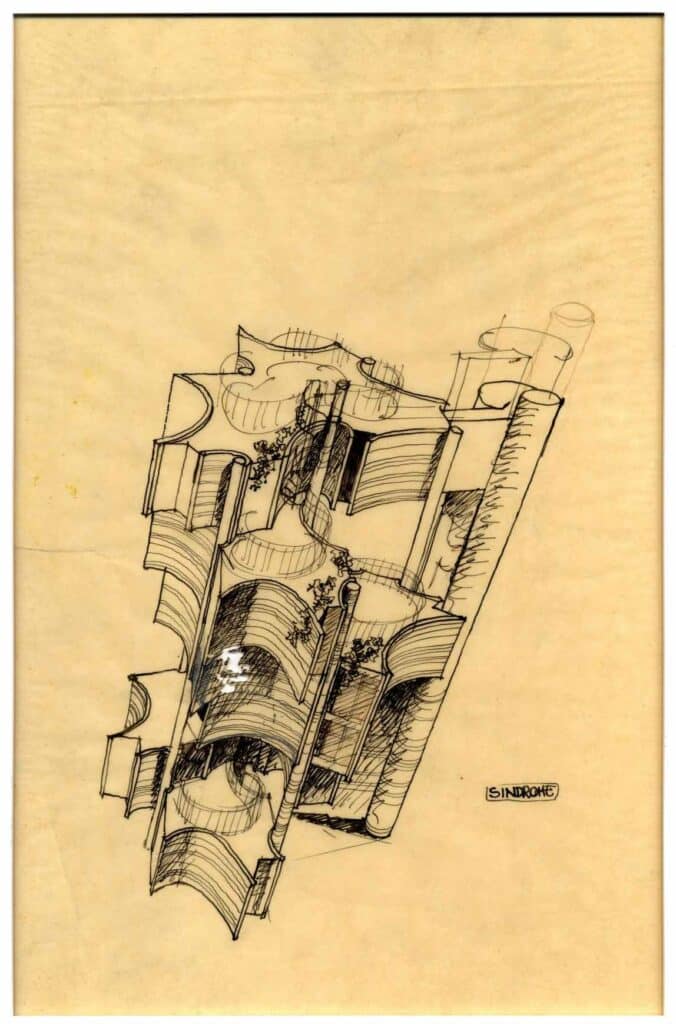
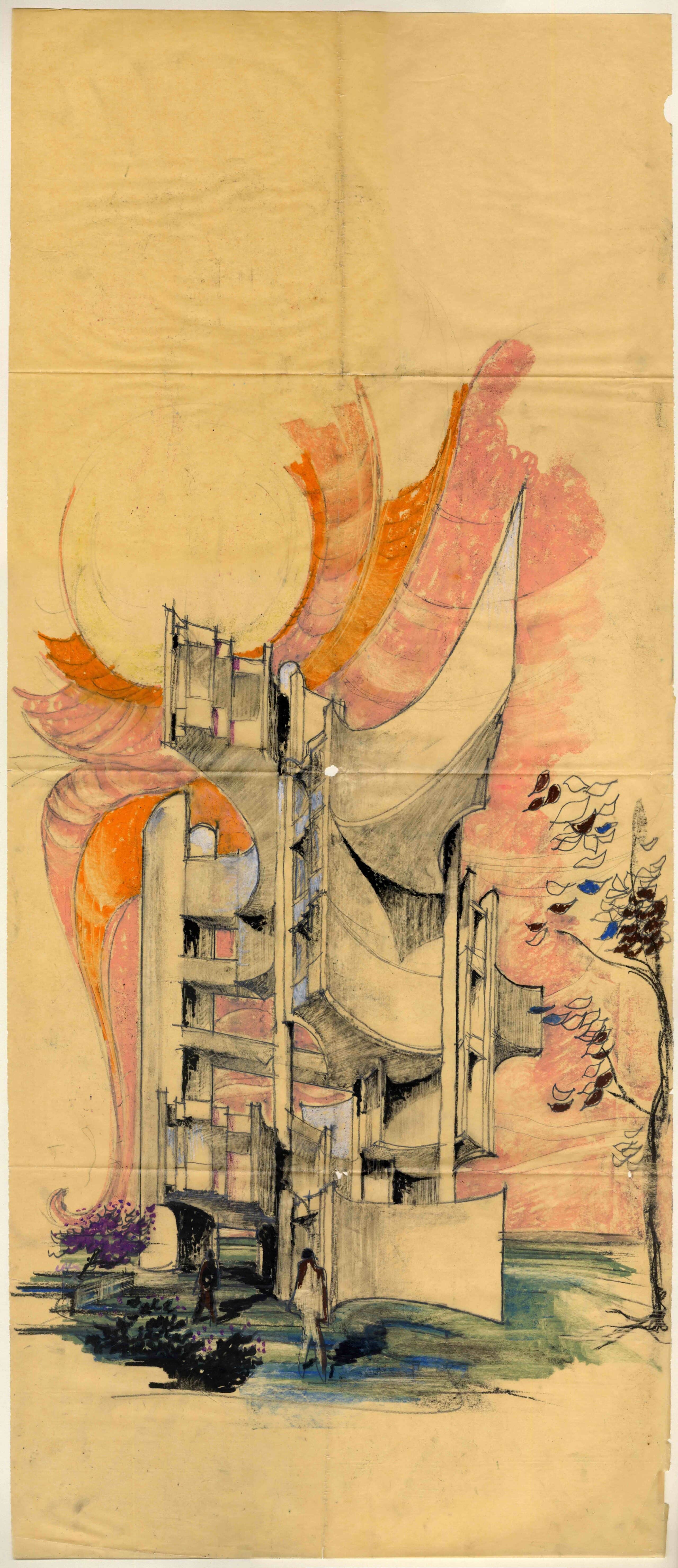
While in Casa Baldi or in Casa Andreis, the project emerges as a direct extrusion from the two-dimensional diagram, in the project for the church in Salerno the field includes all three dimensions.
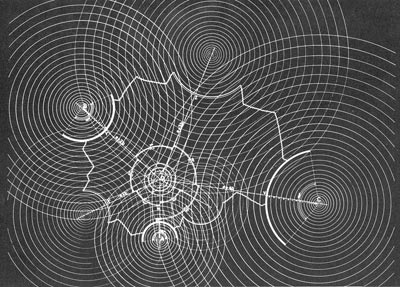
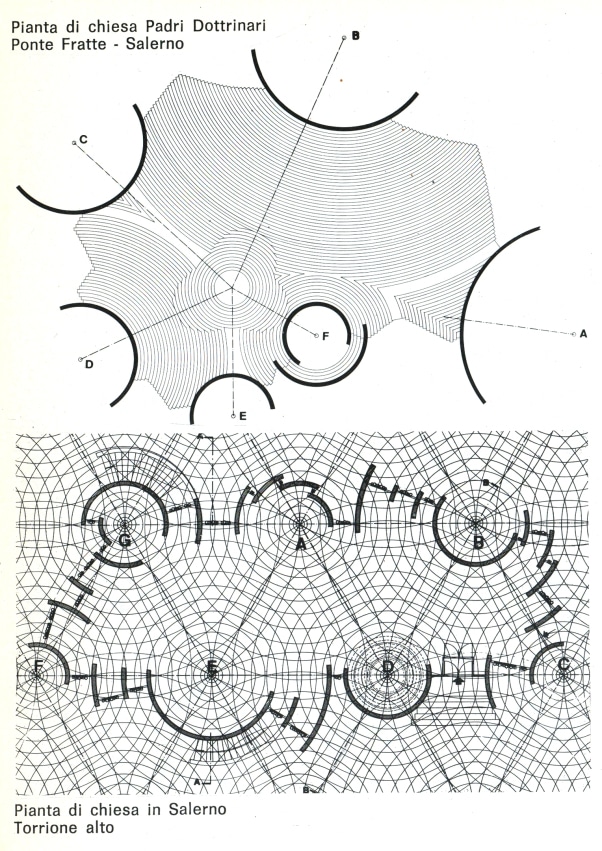
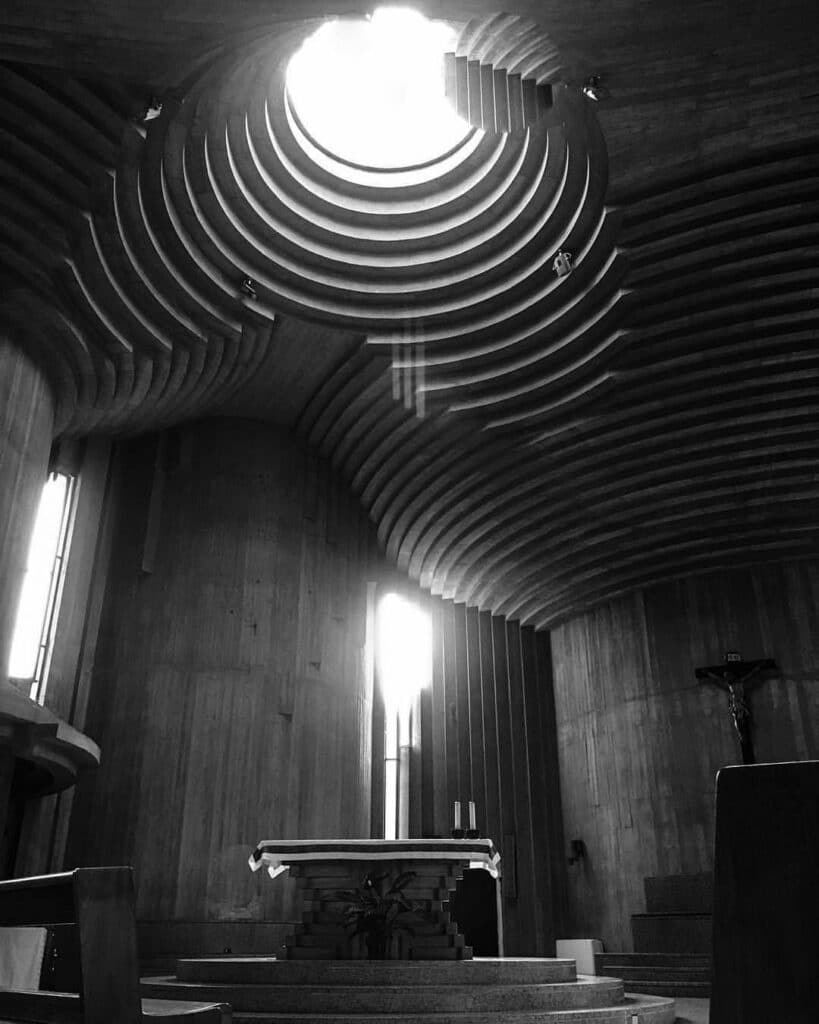
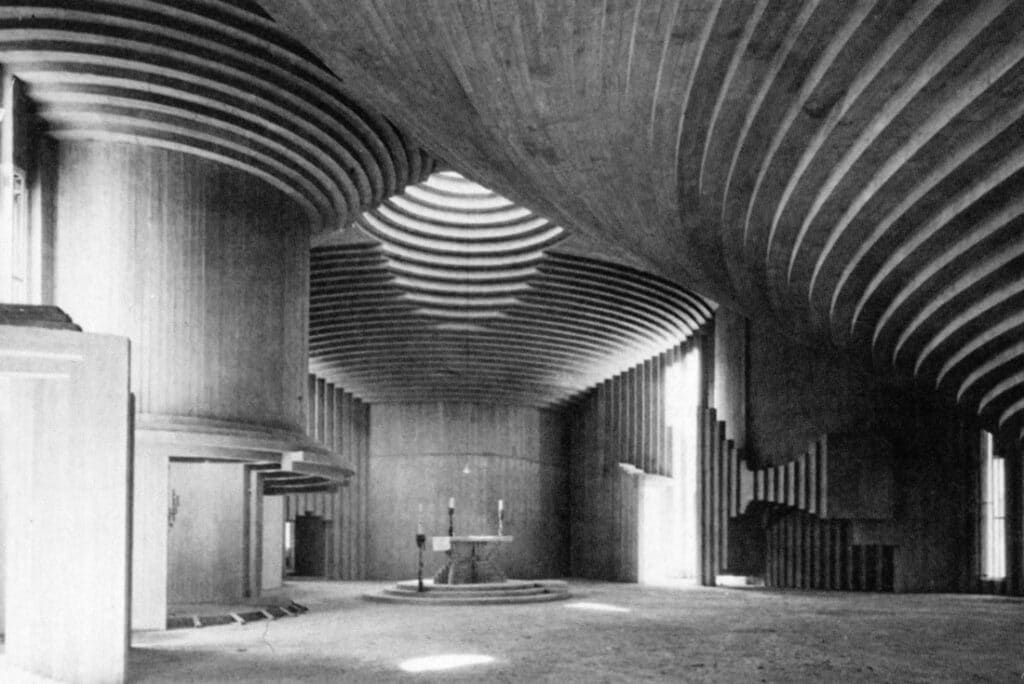
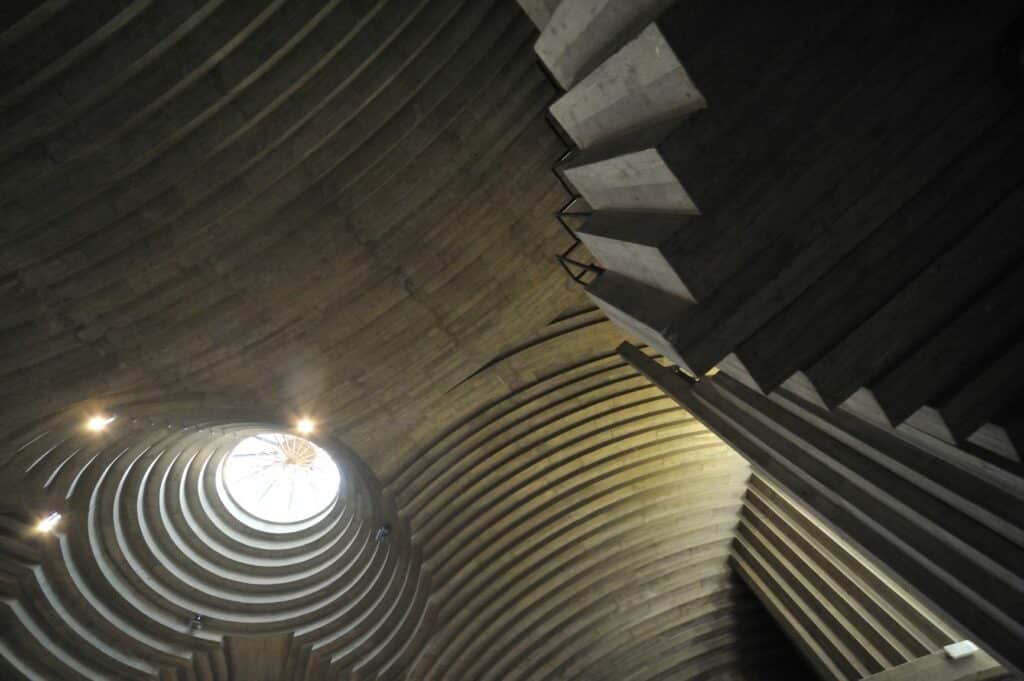
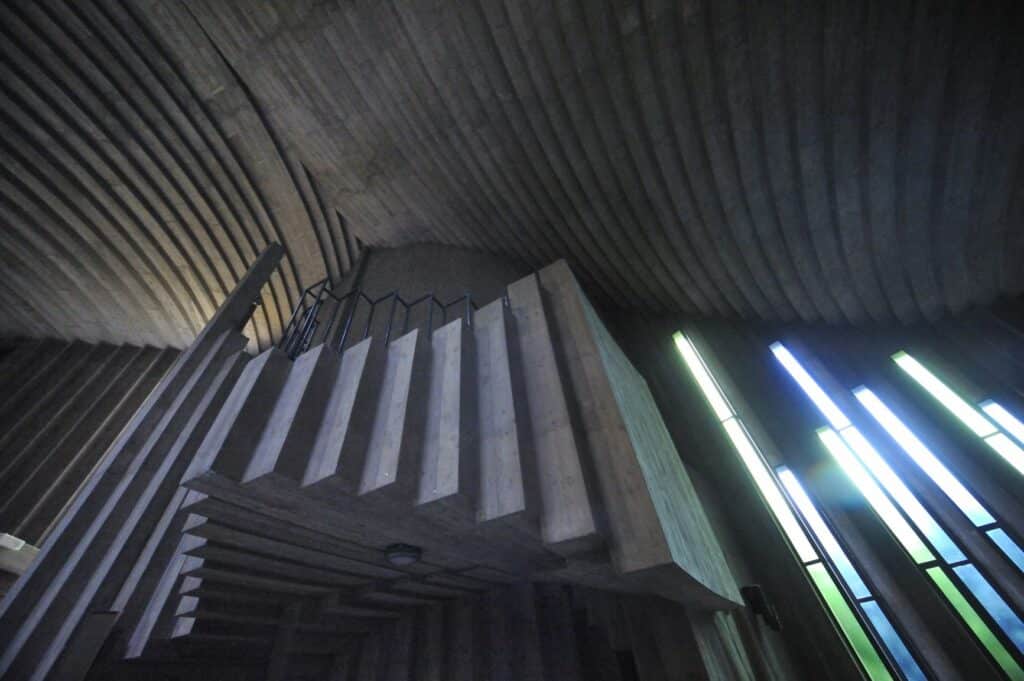
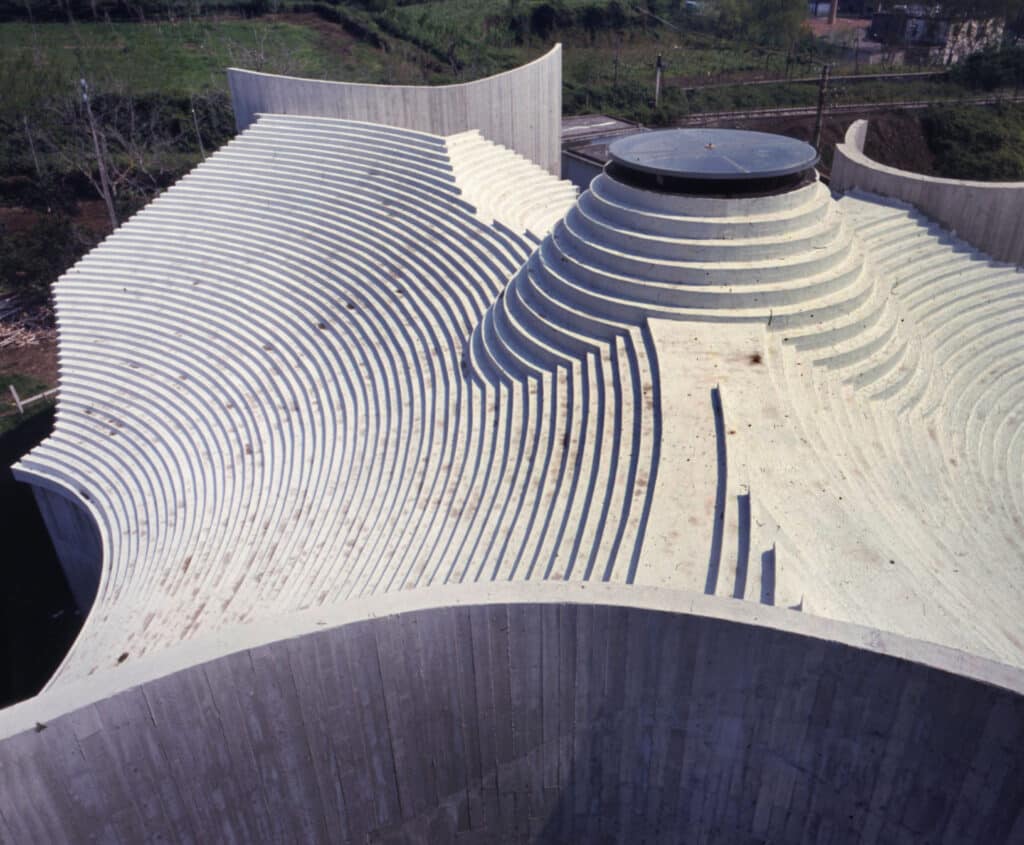
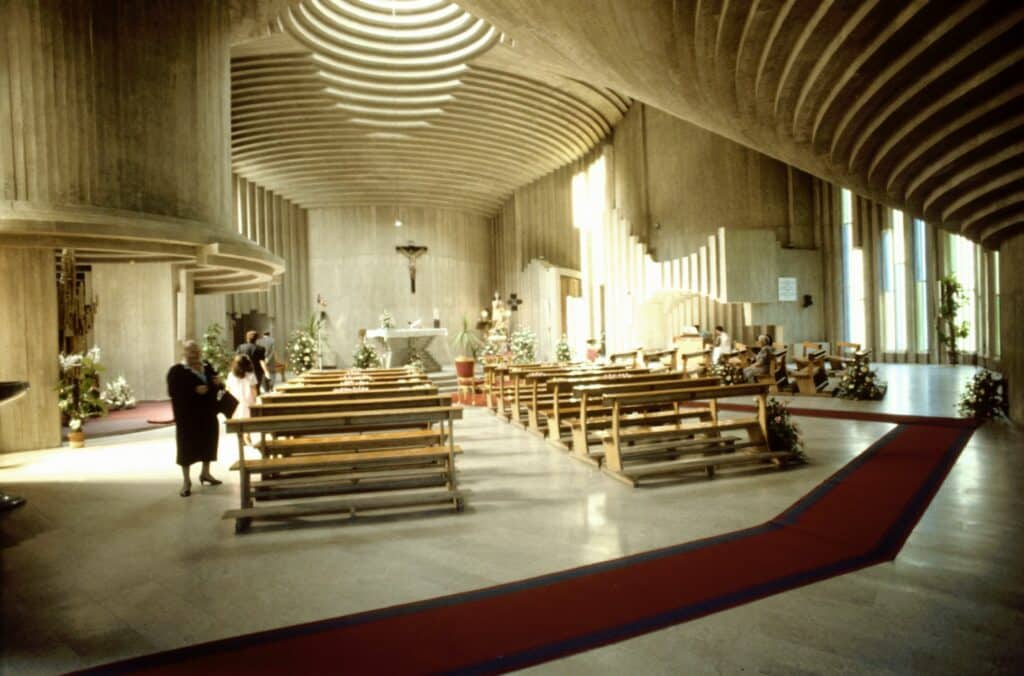
The idea of designing through a ‘soft’ control process on the project gave Portoghesi the opportunity to articulate open compositions in which architecture leaves room to life.
Although Portoghesi continued to design copiously throughout the eighties and nineties, this period undoubtedly remains one of the happiest moments of his architectural production. This attempt to theorise the formal logic in architecture will remain unfinished. Portoghesi went on to join the cause of Postmodernism, propelling his career on the International stage. However, this body of works leaves a memorably bright trace in the history of late-Modernism and an all too often forgotten milestone in the development of proto-algorithmic models for architecture.
Notes
- Gilles Deleuze, Bergsonism (New York: Zone Books, 1988), 96.
- Paolo Portoghesi, Tecnica curiosa. Dall’infanzia delle macchine alle macchine inutili (Milan: Edizioni Medusa, 2015), 32.
- Mario Carpo, The Alphabet and the Algorithm (Cambridge, MA: MIT Press, 2011).
- Roberto Bottazzi, Digital Architecture beyond Computers (London: Bloomsbury, 2018), 90-97.
- Paolo Portoghesi, Roma Barocca (Rome: Bestetti, 1966).
- Louis Sullivan, “Ornament”, The Engineering Magazine, August 1892.
- Paolo Portoghesi, Le inibizioni dell’architettura moderna (Rome: Laterza, 1974).
